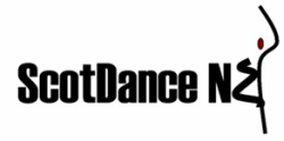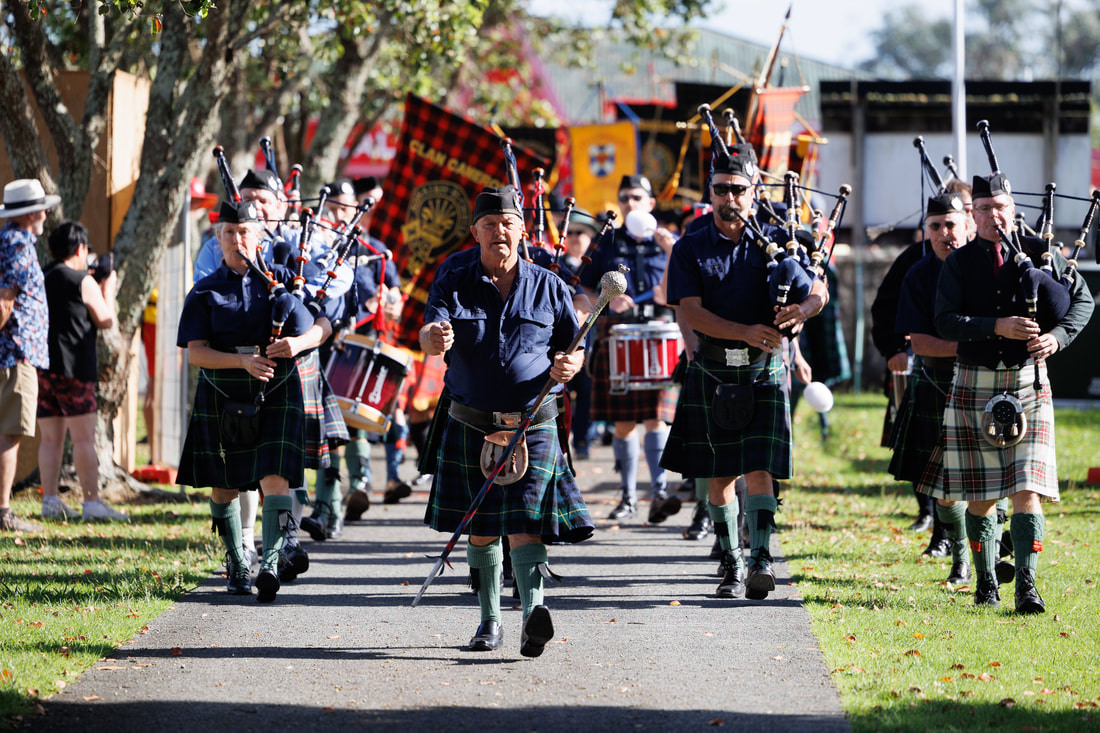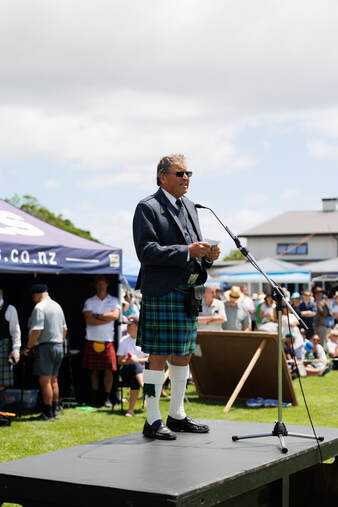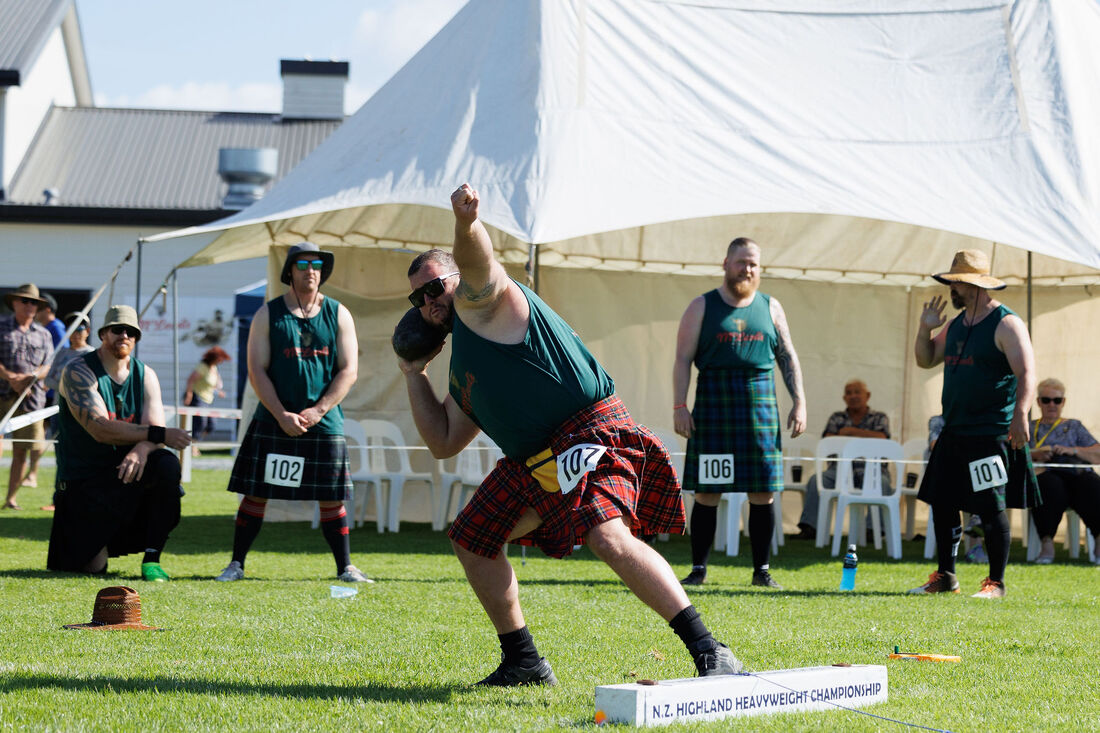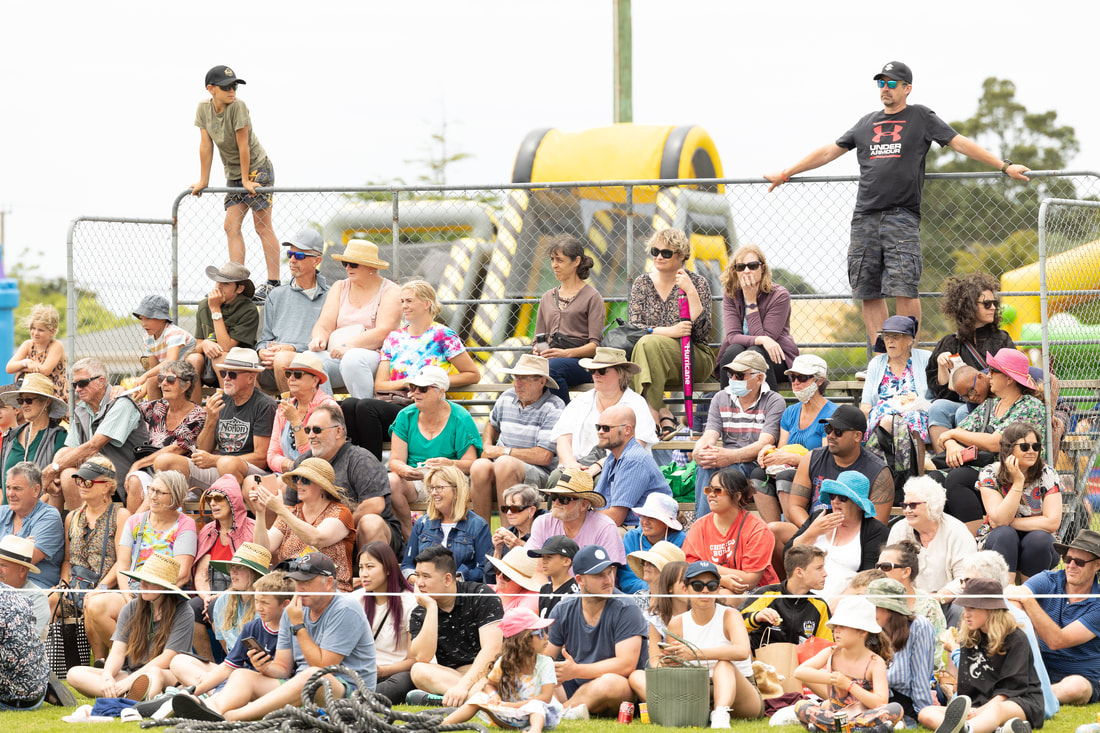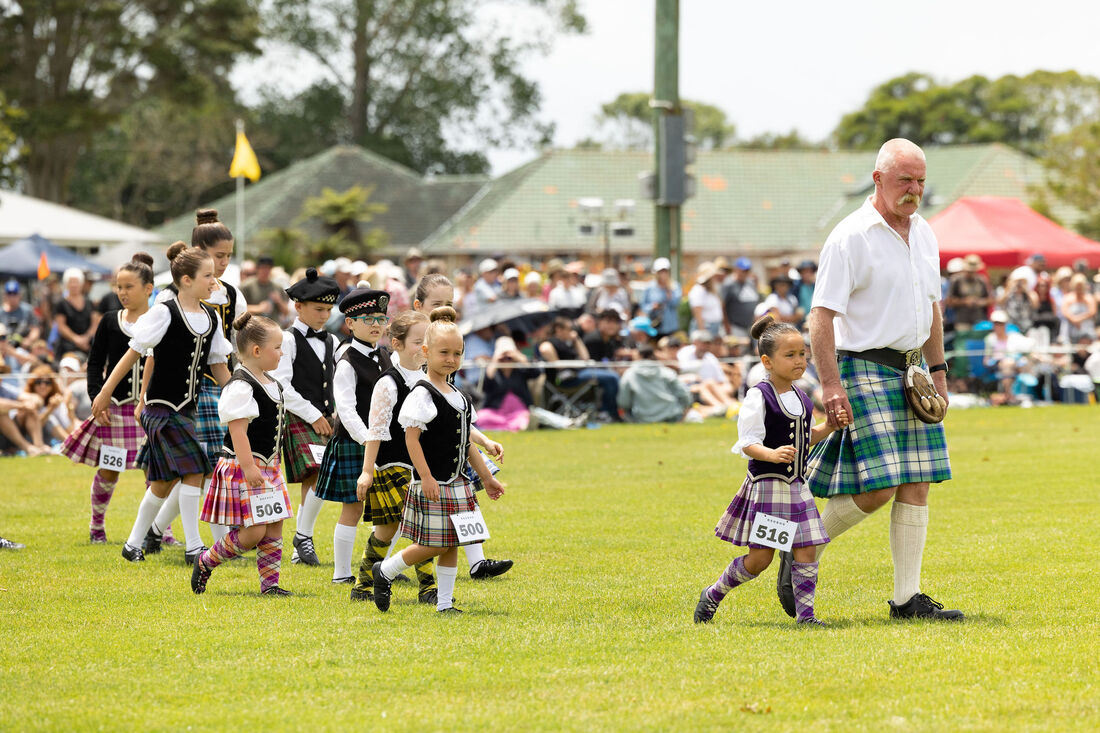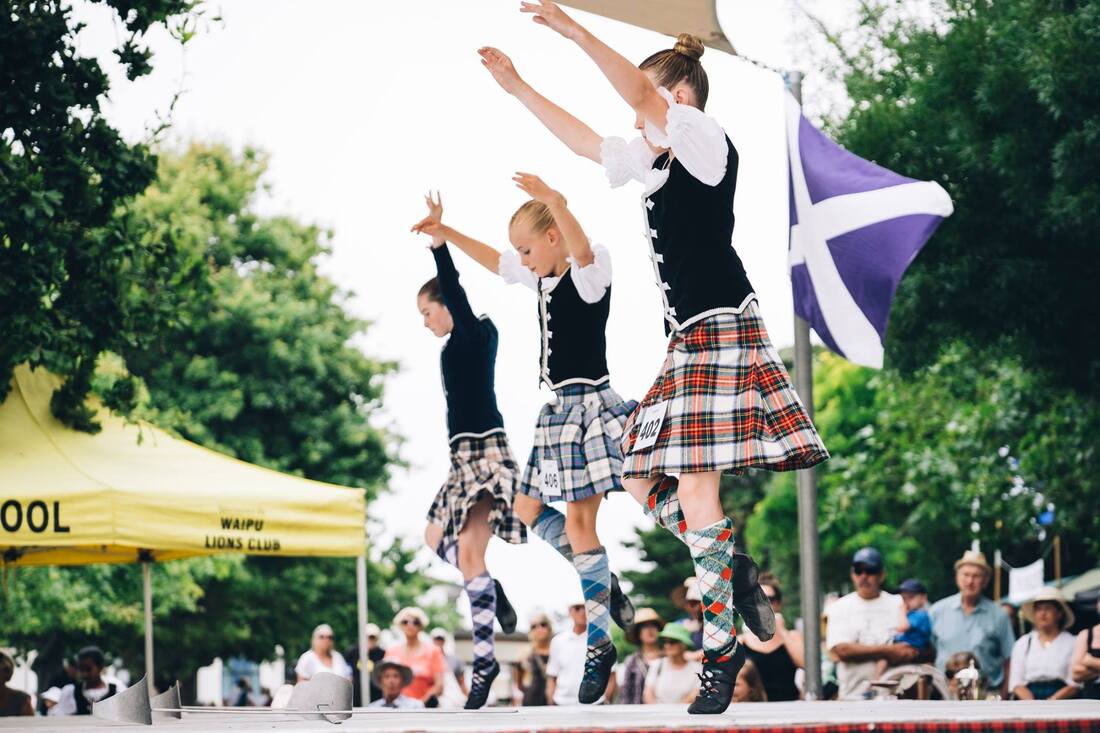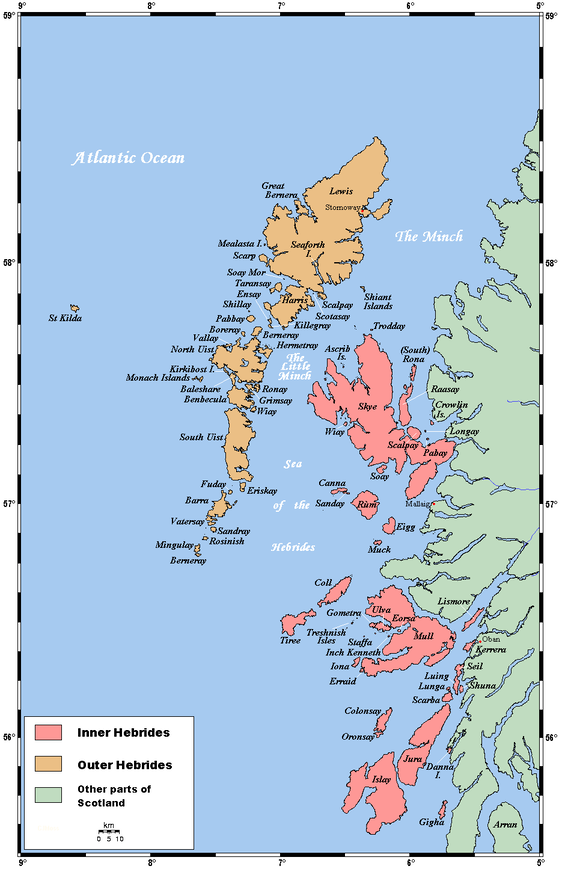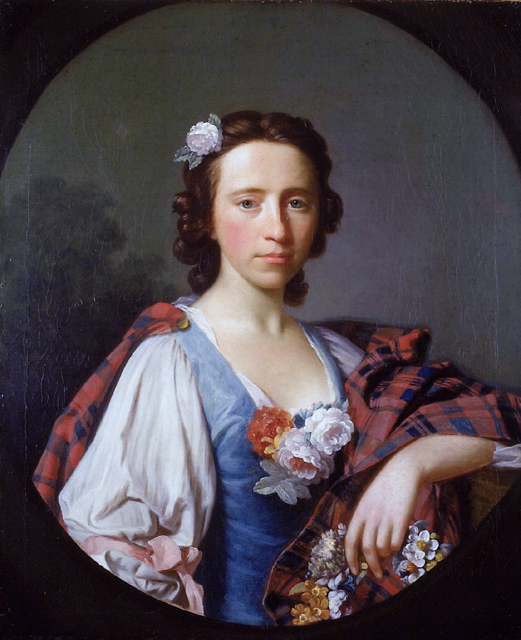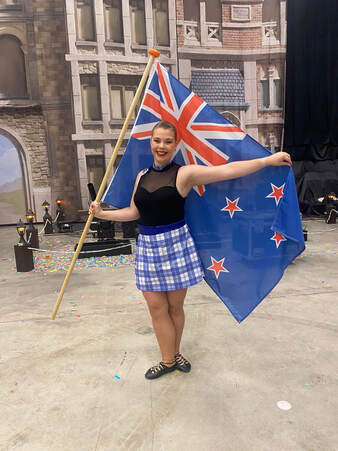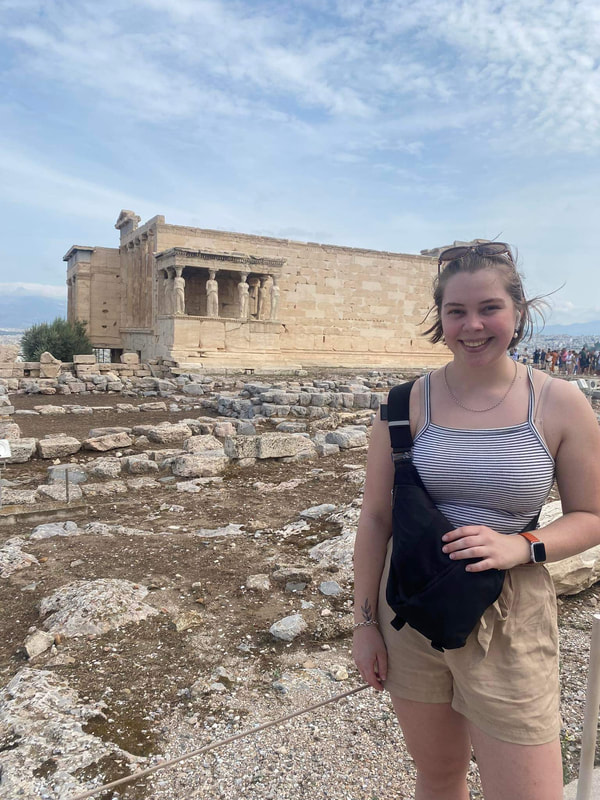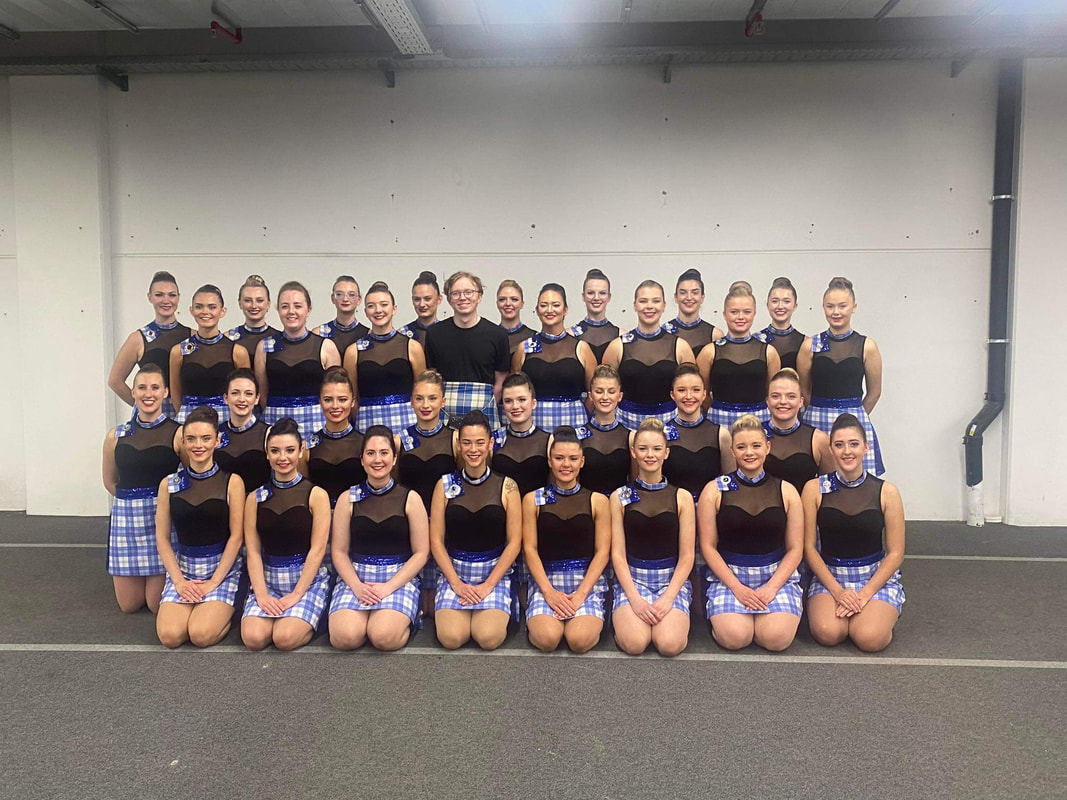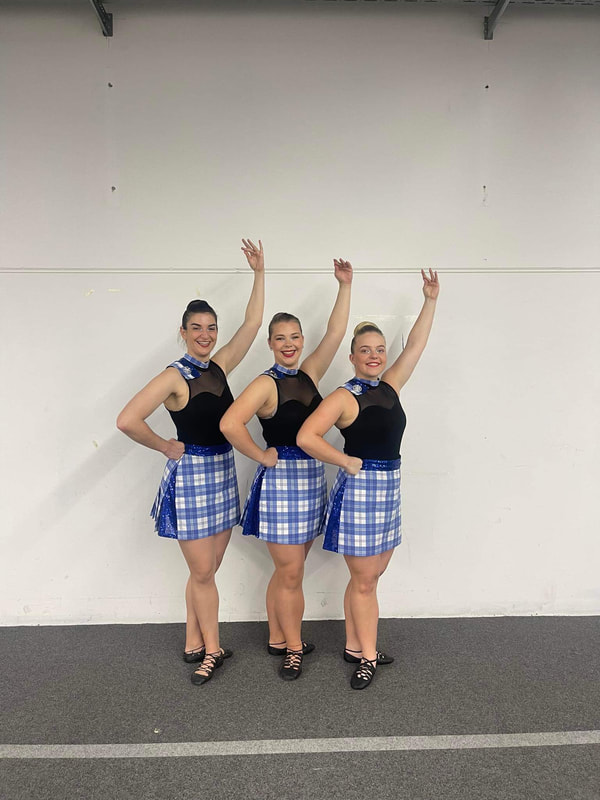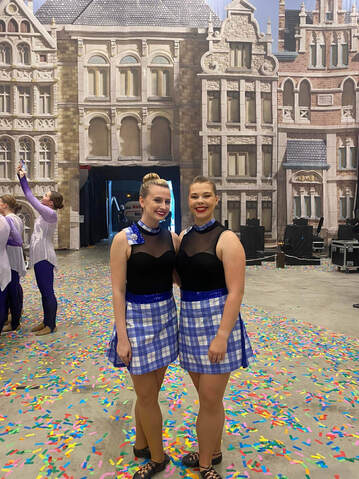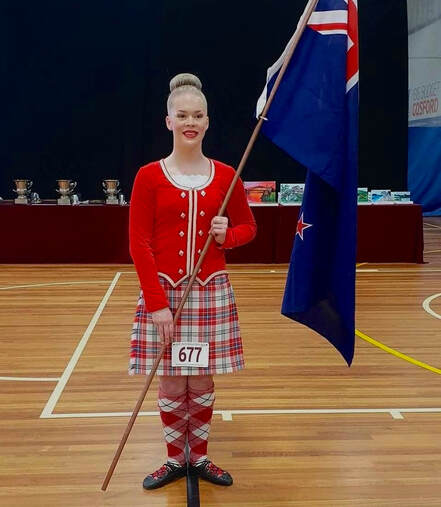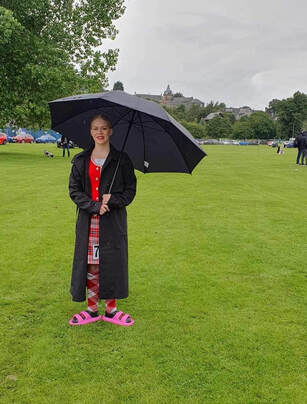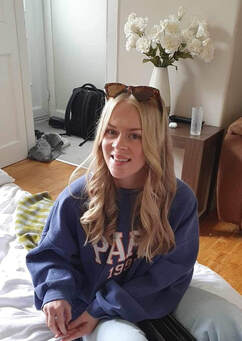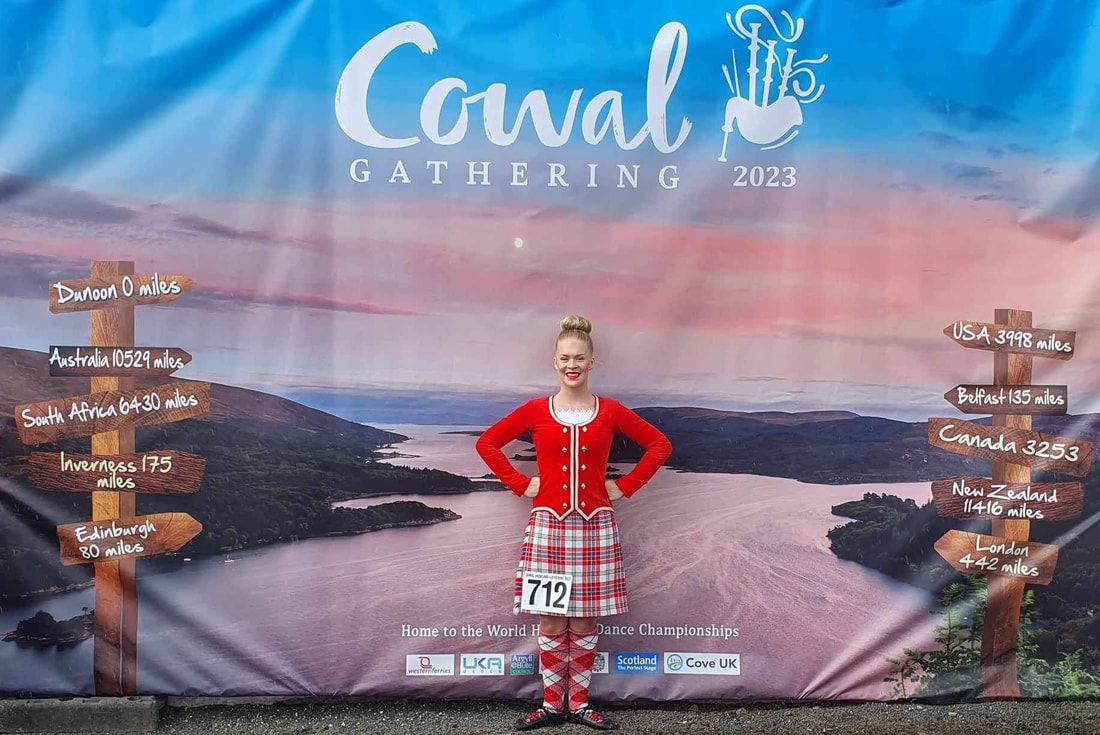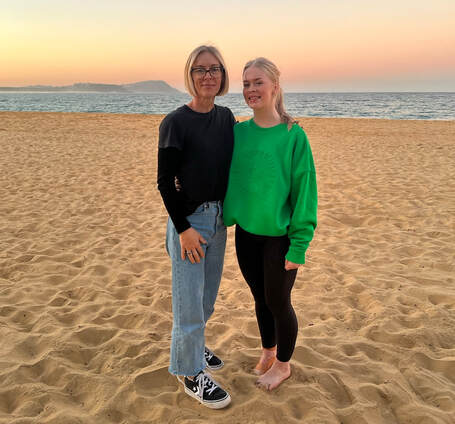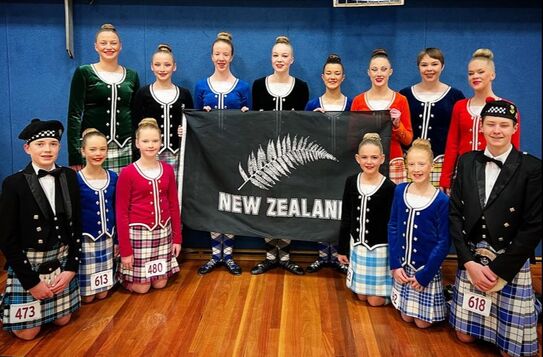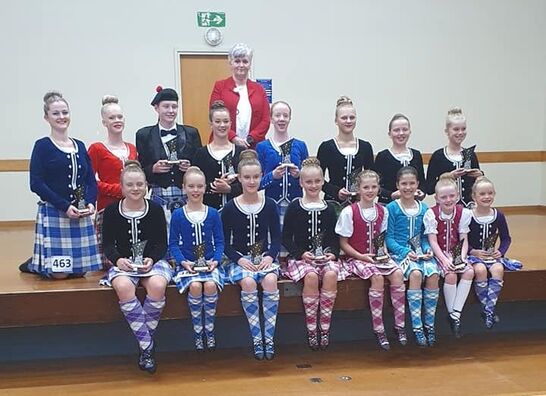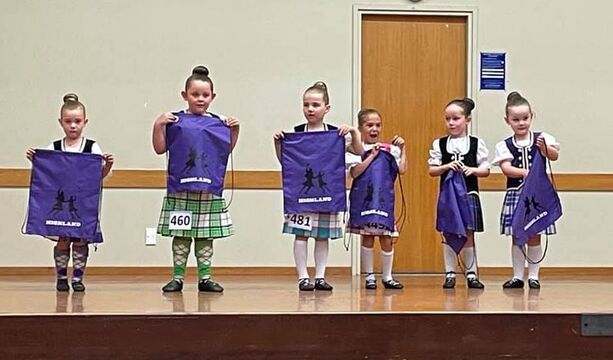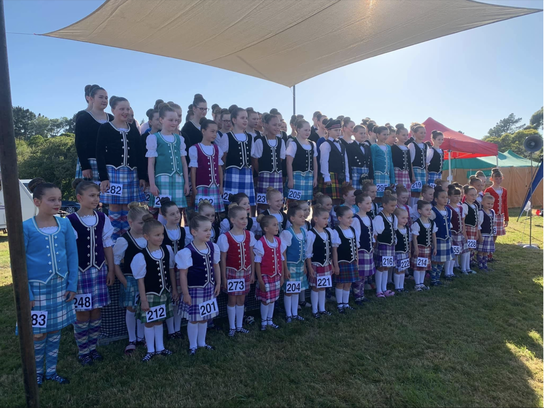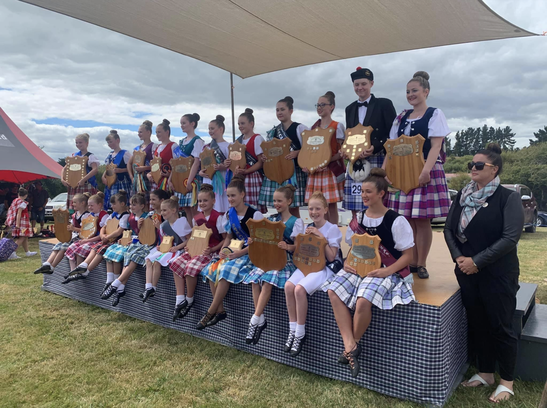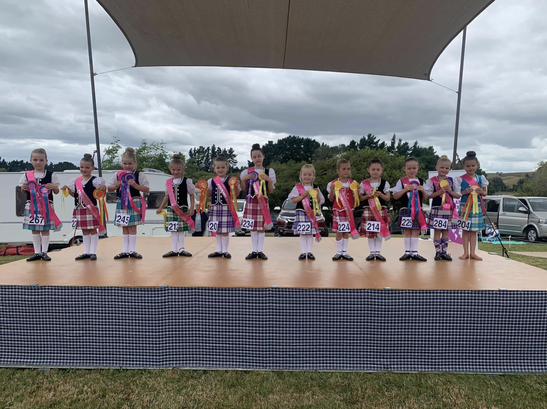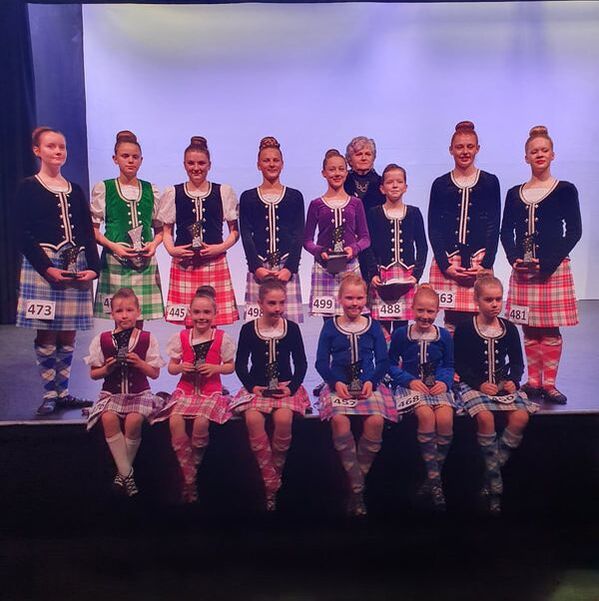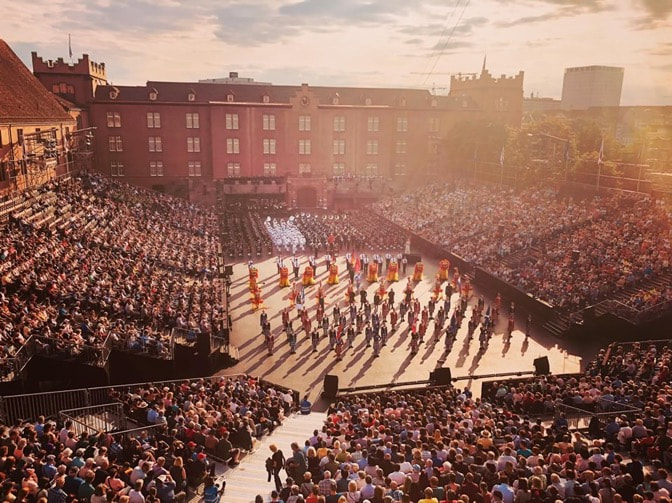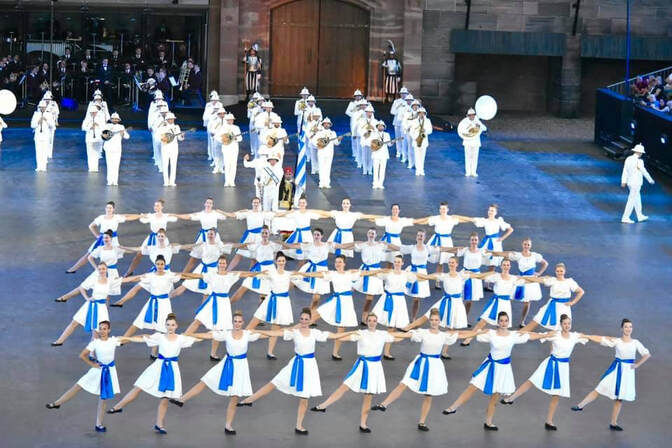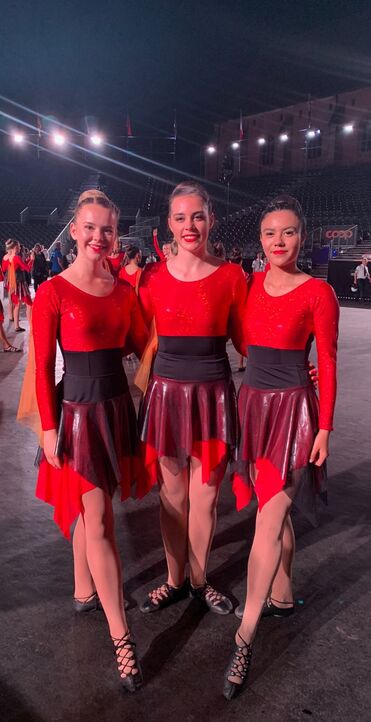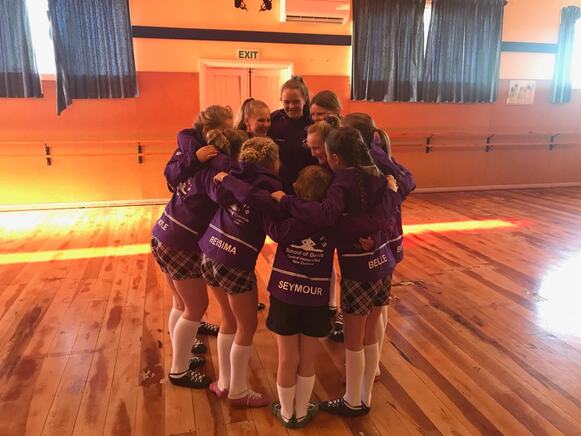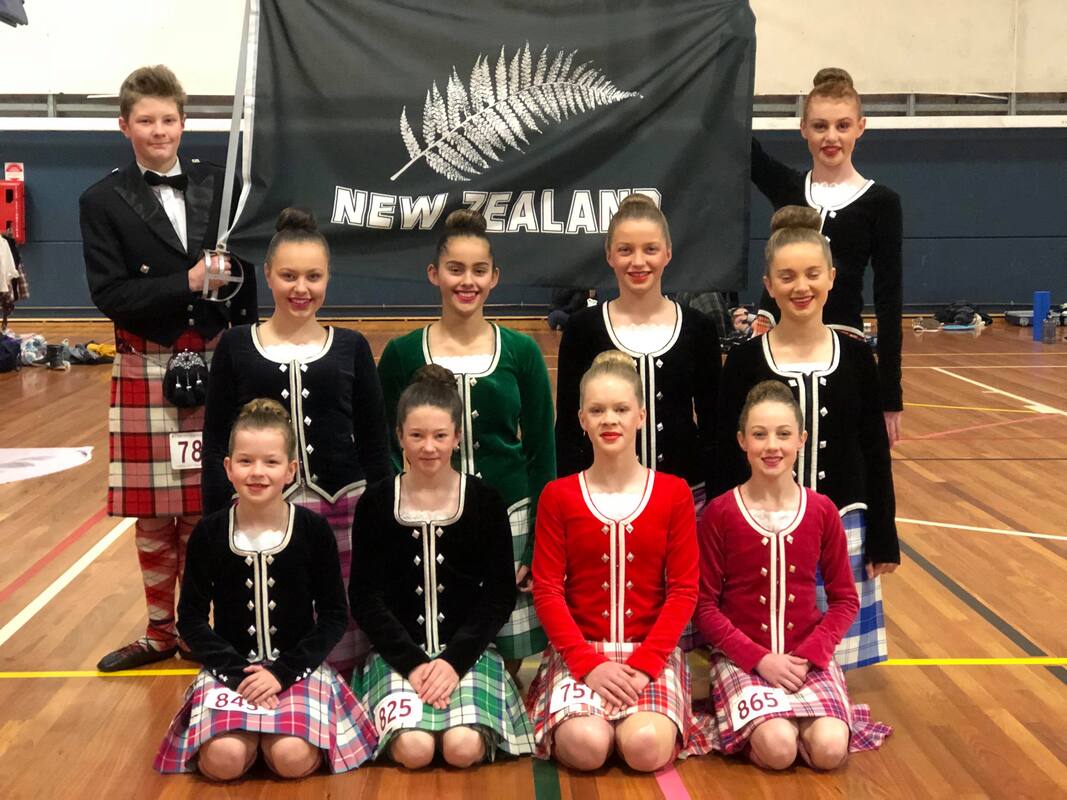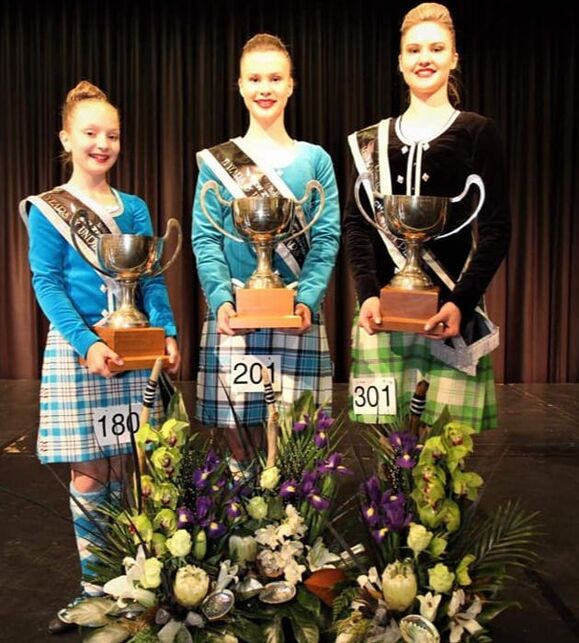|
This is a story of true grit and grace, of a Scots/Kiwi girl who achieved greatness in Highland Dancing against all odds. Her name was Sandra Wright of Tuakau, now Sandra Esplin of Glamis, Scotland, who was placed first overall in the adult World Highland Dancing Championships at the Cowal Highland Gathering in 1966. Sandra is a professional teacher, continuing to achieve in her art. Yet she claims to have never worked. As a wise person once said: It’s not work if you love it. Nearing the 60th anniversary of her achievement, when she first danced and qualified at Cowal in 1964, we salute our past champion, Sandra Esplin, nee Wright. - Scotdance NZ writer Mary-Jo Tohill had a chat to Sandra. Sandra Wright was born in Wishaw, Lanarkshire in Scotland. Her parents immigrated to New Zealand when she was a 5-year-old. “I was the youngest passenger on board the SS Atlantis, dressed in my kilt, although I hadn’t danced at that age.” Her photo made the front page in the newspapers. Growing up in NZ, she lived in Meadowbank in Auckland, Thames and Tararu in the Coromandel, and Pokeno and Tuakau south of Auckland. Her main teacher from age 10 to 17 was Johanna Lees nee Fraser, who lived in Pokeno. They are still in touch. She remembers competing against some excellent female dancers but particularly remembers male rivals such as Brian North, Peter Ryan and Terence Sheridan. Sandra had two big items in her bucket list. “I wanted to win at Cowal and hopefully be employed as a dancer. “I only competed four times in Scotland due to being a dancer in theatre shows, but I competed at Cowal in 1964 and qualified for the finals. “March 1965, I won the United Kingdom Alliance (UKA) championship gaining first place in the fling, swords and Seann Triubhas and placed second in the Reel O’Tulloch. I competed at Cowal and was third overall in the adults.” She was 19 at the time. “In 1966, I only competed at Cowal, and won the World Adult Championship.” She makes it sound like a logical progression and very cut and dried. But it was not. From May 1964 in the lead up to her Cowal debut, until the week before her world championship win in 1966, she was a professional dancer in shows throughout Scotland. Sandra lived the life of a performer - in digs in the town or city where the theatre was based, mainly Glasgow, Edinburgh, Aberdeen and Ayr. To have made the finals in Cowal (1964) without any competition was testimony to her strong performance background; to have finished third overall the second time at Cowal (1965) with only one competition behind her that year (the UKA champs) is remarkable; to have won the worlds (1966) at her only her fourth competition in Scotland is a staggering achievement. Quietly determined is one way to describe Sandra. “I had done lots of competitions in NZ which definitely helped and given me confidence, but I always had ‘tummy butterflies’, and I think most people think of me as very quiet and shy person even today! My worst nightmare is being asked to speak in public. “Cowal August 1965 (which I’d like to add was rather difficult to get to!), I was not allowed to be absent from the Friday evening show, so with my-husband-to-be Joss Esplin, after the show, we ran from the theatre to the bus station in Dundee, travelled to Perth railway station where I got a little sleep and Joss kept his eye on people experiencing homelessness that night, arrived in Glasgow where my former landlady gave us breakfast. Then another train, bus, boat, and bus to Cowal. It was a cold wet day and I was pretty tired by the time I arrived at Cowal. “I don't remember any nerves as I was so tired, wet and cold, and I didn't expect to be in the finals and never dreamt I'd be placed third overall! “When we arrived back at my future in-laws in Glamis, they said I quote, “we will take you next year”, and they did.” She had made a promise to herself to win, and another to her parents to return to New Zealand for her 21st birthday. “1966, again, I don't really remember bad nerves as I didn’t expect to be in the finals. I was then more concerned that my left Achilles tendon, which was well strapped up, would break before I'd danced the three dances in the finals. I had pulled it as I practiced the required dances outside on concert slabs which weren’t totally level at my future in-laws house at Glamis in the last few days leading up to Cowal in 1966. My right foot was strapped up, plus I had done no competitions since Cowal the previous year.” Despite all of that, she won. Sandra came home to New Zealand in October 1966 and can remember very clearly how her achievement was acknowledged in New Zealand. “When our ship docked in Auckland there were dancers organised with swords
making an archway, which I was to be walking through. Then we were all to do the Highland Fling. But two weeks before reaching New Zealand, I was doing the Sword Dance on the ship while crossing the Indian Ocean, and went over on my ankle and broke a bone in my left foot in the last bar of the dance, so I left the ship in a wheel chair. “It was a disappointment for me, the dancers, teachers and piper Syd Scott. Syd was the father of my very good friend Heather Scott. A photo of me in the wheel chair with Joss, my future husband, and Syd Scott playing the pipes was on the front page of the New Zealand Herald. In Scotland, Sandra found the attitude to New Zealand dancer nae bother at all. However, they did find her dancing style quite a bit different. “The movements, the rhythm, the steps were all vastly different and I realised if I did not dance the set steps I would be disqualified. “I had only two or three lessons from a Dundee teacher in 1965, but I got the SOBHD book and learnt all the differences in the set steps, positions and timing by myself. There was lots I had to change; the placing of the foot in shedding, arm positions, timing, plus all the set steps in every dance.” Sandra has been a UKA member since 1965. After her stint back in New Zealand, she went back to Scotland in 1970 with husband Joss. “Joss and I were a ‘double act’ in many theatres shows in Scotland, Canada, a few in the USA and three series on Television. The programme was called Alec Finlay & the Royal Clansmen. I was the only female. The others were Alec Finlay, a prodigy of *Sir Harry Lauder, Will Starr, Dennis Clancy, Arthur Spink, Ronnie Coburn, my husband Joss Esplin and me.” * Sir Henry Lauder 4 August 1870 – 26 February 1950) was a Scottish singer and comedian popular in both music hall and vaudeville theatre traditions; he achieved international success. “Sadly, Joss is no longer with me, passing on in 2018. Joss and I have two sons. Scott the elder, is an architect in Forfar, but he did dance on Television and in many Scottish shows, and Kyle has been a professional entertainer on cruise ships since he was 21, singing and playing piano as a headline entertainer. “I was a professional dancer in theatres and hotels from 1964-2009. “I started teaching in 1977 and I’m still teaching. I’ve never worked!”
https://www.facebook.com/sandrawrightschoolofdancing/ The Waipu Caledonian Society has made the bold call to run the iconic Waipu Highland Games on New Year’s Eve from now on, rather than the traditional New Year’s Day. That means there will be two Games this year, the 151st Games, which was on 1 January and the 152nd Games that will be on 31 December during the transition period. Waipu Highland Games chieftain Ted Hart is quietly optimistic that people will embrace the change of date and the rationale behind the move. “I presented the idea to the AGM last year. It originally came from a vendor because of the issues around getting staff to run the stalls and having to pay double time, and that it would be so much better if it (the games) were not on New Year’s Day. And the idea grew from there. “The main catalyst was the Scottish Highland Heavyweight events (hammer throwing, rock throwing, caber tossing etc) and the running of the Heavyweights New Zealand Championship. We’ve been really struggling to get guys to the event, because of the (travel) cost, and the time of year.” The 150th Games, a significant milestone only attracted four open heavies and five novices, which usually has 20 in the competition. Something had to be done to attract competitors to the Games, one of the longest running in the southern hemisphere; an event that has put Waipu on the map all these years. The little Scotland of the North has always been a draw card for Highland Dancing as well as piping, drumming and the athletics events. The decision was made to create a circuit of three heavyweights events to accumulate points. The circuit would include Paeroa Highland Games in February, the Hororata Highland Games (Canterbury) in November and Waipu (now 31 December) with the highest points and championship awarded at the Waipu games The other factor was the lack of volunteers, because people naturally wanted to have a celebration on New Year’s Eve. What the organisers had been finding increasingly was that people weren’t turning up to the events until 11am, because they’d been celebrating the night before. “Most of the main events are over by then, so that has been an issue,” Ted said. Also, the costs for services such as the toilets was becoming costly and inconvenient due to the fact they had to be delivered early because of the public holiday. “So there have been a whole of factors. It was a unanimous decision with two (committee members) abstaining from voting. There was no ‘selling’ of the idea needed. Everyone was in favour of the dealing with these issues and getting on with it. “All in all, this will be a sea change for us. Until we do it we don’t know how it’s going to go. But the feedback we’ve had is that it could suit people better. We have eight (heavyweights) competitors committed to coming back this year.” The celidh and hogmanay celebration would be on New Year’s Eve following the Games. “We hope that this will suit the public better as far as attendance at the games.” Waipu Highland Games secretary Kelly Sandford said the move was a response to a change in society. “We’ve been noticing this societal change for years. It’s harder to get people involved. Once upon a time the organisers (committee members) were on farms and they had the flexibility of time. “It’s not the same now. Both parents are working fulltime in jobs (offsite) and their kids are busy. There’s also so much more involved in and around employment laws with working on a public holiday. It’s difficult to get vendors and for people to help on the day. So something had to change... “So we’ve decided to try it this year (31 December 2024). We can always move it back if it doesn’t work for people. “I would expect the least impact on the dancing and piping, and would hope it could be of some benefit especially for the teenage/young people who like to have a good time on New Year’s eve. If they come and compete 31 December, and have the competition out of the way, that means they can relax New Year’s Day.” Scotdance NZ President and organiser of the Highland Dancing competition Mark Forshaw said he could understand the organisers wanting to try something new. “Our local dancers are very loyal and supportive so it’s not anticipated that the change will affect the number of entrants. “The possible downside is that New Year’s Eve day is still a work day for some people – it’s a Tuesday this year, although some people will be on holiday then. Many dancing parents have to work. So we may be looking at the games not being the family outing that it currently is. “It seems a shame to break the tradition of the games being held on New Year’s Day, but I guess one can only try a change of date and see what the outcome is, and it’s good that there is a willingness to be flexible to make it work for the majority.”
Article written by Mary-Jo Tohill - ......... but really "How Scottish are you?" All my life I've been telling people I'm related to Flora Macdonald - yes, the very same that the national dance we do is named after (and yep, she inspired the Skye Boat Song for helping Jacobite Bonnie Prince Charlie flee Scotland after the Battle of Culloden). And now I may have a tiny bit of proof, thanks to the whole ancestry.com craze! My grandmother (Myra Milward Stevens nee Macdonald) was a Macdonald - note the small 'd' - and her grandfather Malcolm was from near Baleshare (Scottish Gaelic: Baile Sear) in the Outer Hebrides of Scotland. Baleshare lies to the south-west of the island of North Uist. It's those bunch of islands off the western coast of Scotland. Skye is one of the well-known islands of the Inner Hebrides and is connected to the mainland by a bridge. Her grandmother was a McKay from Inverness but that's a whole other story... Flora Macdonald was from the island of South Uist, in the Outer Hebrides, in 1722. She was born in the village of Milton. After her father's death, she was brought up under the care of the chief of her clan, the Macdonalds of Clanranald. This is also my clan. My mother (Billie/Myra Jill Tohill nee Stevens) recently did a DNA test, and astonishingly her gene pool origin was very specific to these places in the Uist islands. Look - same nose and eyes as good old Flora! That means I've inherited a fair swag of these genes (and the Viking ones too - there's a big dollop of those). Seriously though, Flora and I although not closely related are likely to have shared some of the same DNA.
I'm inspired enough to do a DNA test - there shouldn't be too many surprises; still it would be interesting to find out how Scottish I really am! There is no doubt equal proportions of English and Irish in there too. Here's how you can find out: Take a DNA test - is one way Look for a genealogical centre. Tip: I'm from the Macdonald clan. A good place to find out information is the Clan Donald Centre in Skye: https://armadalecastle.com/ https://www.isleofskye.com/attractions/visitor-centre/museum-of-the-isles There's heaps of help online - try this site: https://www.discoverresultsfast.com/web?q=free+scottish+genealogy&o=1673447&cid=20708429179&agid=160617088731&utm_source=google&gclid=EAIaIQobChMI7Ii6se_WhAMV78E8Ah0kow1ZEAAYAiAAEgKQkvD_BwE&gad_source=1&qo=semQuery&ag=fw10&an=google_s&tt=rmd&ad=semA&akid=drf-20708429179-160617088731 You would need the name of your ancestors your grandparents/great grandparents etc to begin a search, or narrow it down. This could also show where and when they left Scotland, where they ended up etc. We would be really interested to hear your stories which could include:
Your contribution should include:
When you’re in your early 20s, and you’re getting to the end of your competitive career, many dancers choose to hang up their kilt. However, Amy de Bruin of the Lothian Highland Dance Studio in Whangarei wanted to keep dancing. She also wanted to travel. How to combine the two? Mary-Jo Tohill had a chat with to Amy to find out how she did it… Amy, 22, works for a hotel in Wellington, and moved down in 2020 during the pandemic. She studied for a Bachelor of Commerce majoring in tourism and information systems at Victoria university. Like a lot people, particularly the young, their study, interests and travel were disrupted because of Covid-19. For the past three years, Amy has kept up her dancing via zoom lessons. But this year had been particularly tough with shift work, and hard to stay motivated, although she was going to the gym several times a week to keep fit. “Dancing on your own is not a lot of fun and I’d been following several Facebook pages, and came across a tattoo in Belgium. You could audition online. “I’d been planning a trip for three years, so I figured I’d go for it and if I got in or not, I’d still go.” This was with the International Tattoo Highland Dance Team which was going to be performing at the Belgium Tattoo (Internationale Taptoe België) at Ostend in Belgium, Europe. The main choreographer was New Zealander Crystel Benton, who will be a familiar to some people. The audition included a championship step fling, a Seann Truibhas and performing a leap step. Amy got into the team, and was the only kiwi, amongst 32 dancers from around the world, including Australians, Americans, Scots, Canadians and one South African. They did two items, one based on the reel and another choreographed piece. They danced one item in their own kilts, and were supplied costumes that included a mini kilt and leotard top, for the other. The team members got a video to learn the dance about three weeks before the tattoo, and a list of steps, and had one zoom get-together. “When I got there, it was hard to figure out where I was going. We had two days practice to get it right. “I got there on the Thursday. We rehearsed until 8pm-9pm. Then you went to bed, and it was another full day leading up to the show. And then we had two shows. It was an absolute whirlwind. It went so fast. It was held in a stadium, with a concrete floor and stands up the side, but it was covered and being October (the Northern Hemisphere autumn) that was nice.” While the dancers paid their own way to get there and were not paid for their performances, the hotel, food and transport were taken care of by the organisers. “It was so fun. It was definitely go, go, go, and not much time to get sorted. No time for sightseeing but I did get to Bruges (afterwards). But it was the same for everyone. I met some cool dancers, so with 32 dancers, there were some lovely people, so it’s easy to have fun when you’re with good people.” She would definitely do another tattoo and will be keeping an eye out for the next opportunity. The short time period suited her. “I don’t think I could do Edinburgh (tattoo). I think a month would be too much. I think a week of shows would be ideal.”
She had a few things in her favour; an understanding employer who allowed her to take six weeks off to do her trip, her parents, who had always been great supporters, and relatives in the Netherlands. “I went over with a suitcase for my dancing stuff that I dropped off with the rellies, and I kept the backpack.” Apart from looking out for tattoos to do in the next few years, the next thing on her dance horizon is studying for her associate teaching qualification. “I have done some teaching and really enjoyed it. “I'm not in it (dancing) to compete, it’s more social for me, but I want to be in that community.”
“We made the decision to go in August 2022. “Fitness-wise, I did a lot of cross training/pilates/core work, gym classes as well as normal dance classes/competitions. It was ramped up closer to leaving overseas, aiming to do a championship dance through a day and practicing in my kilt.” She would recommend every dancer wear their full kilt when preparing for championships to get accustomed to the look and feel. Encouraged by her results in Australia and feeling good despite the injury, Solai got to Scotland at the beginning of August. Jetlag didn’t affect her too badly, except a motion feeling when dancing. But she was fine after about a week, doing three highland games and three championships leading up to Cowal. She was the only kiwi competing on the circuit.
“We booked Airbnb quite a wee while before we left NZ; it was a bit tricky to get accommodation which suited us especially apartments with a carpark.
“The accommodation for Cowal in Dunoon MUST be booked as soon as you know you are attending the championships as it is hard to find accommodation there. Stirling is a beautiful place with a lot to see and do, although I was dance focused, I found that sightseeing wasn’t my priority.” Nerves were a big hurdle to overcome, and she tried different remedies to deal with them; “stress less oils, listening to music, trying not to overthink things etc, etc.” Other things were more easy to adapt to – the food choices were good, reasonable in price and readily available. School work wasn’t too much of an issue as she’d given her teachers plenty of warning. “I let my school know I was away for nearly six weeks and worked my Year 13 work around this, and they worked with me with what I wanted to achieve.” Morgan had contacts in Scotland so Solai was able to attend private lessons and premier dance classes with her good friend, teacher Danielle Law. “I really enjoyed taking part in the dance lessons and made some friends there. We also hired rooms in local community centres in Leith and the Stirling area which we googled to find and they were great.” Competing in Scotland was “a life changing experience”. “I had to be more resilient, adapt to different scenarios quite quickly and I made some really great connections and friendships. I definitely could not have done it all without Morgan. “I unfortunately travelled with a foot injury and feel proud of myself for pushing through, competing and also achieving amazing placings and judges points at all competitions. “My greatest achievement was dancing on the Cowal stage which was a life dream – what an experience that was. “It was a time of personal growth, and very challenging. “I’d love to go back overseas to dance when I’m ready. It’s a little too soon at the moment. “I am sorting my foot injury out and looking forward to competing in 2024. Some exciting opportunities have arisen from my travels which will soon be announced.” Her advice to anyone else hoping to go over and compete: “Take it all in.” 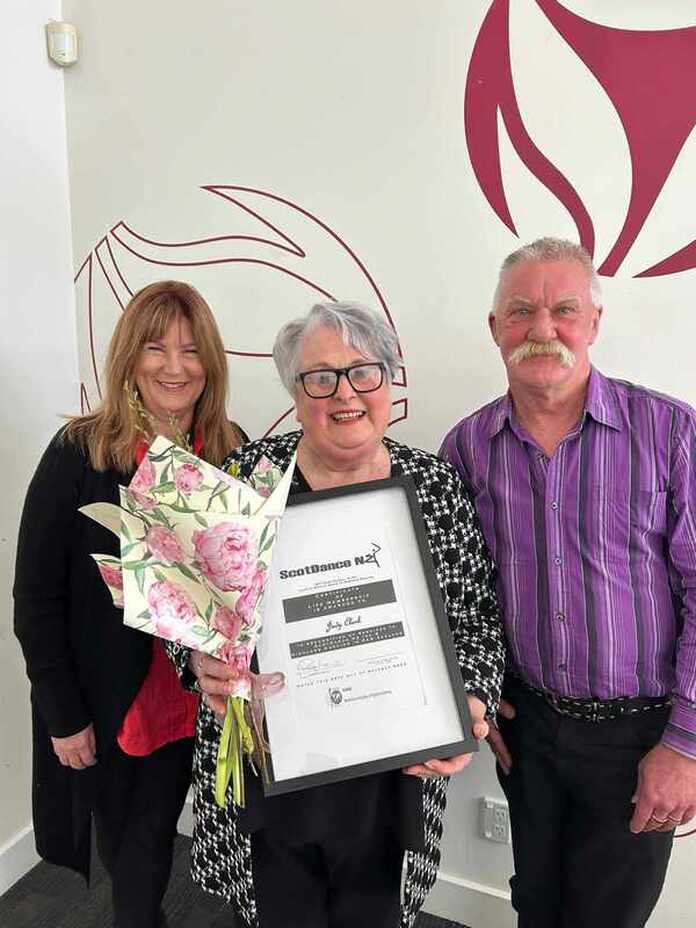 At our recent AGM Judy Clark was presented with Life Membership for her services to our organisation - pictured here with Christine Burgoyne (Vice Present) and Mark Forshaw (President)
Read about Thistle highland dancing student Nathan and his successes...
It has been a busy couple of months for one of our dancers. Nathan travelled to the Grand Australasian Championships held in Sydney in June 2022 where he won the restricted premier group for Scottish Nationals. He then travelled to Gosford in July to the International Championships. On the first day he placed in all his Highland dances and was the winner of the restricted jig and hornpipe title. On the second day he was the highest placed restricted and 6th overall in the 15 years championship. We also had Kathryn who danced in her very first competition at Gosford and she placed in her hornpipe. Nathan then travelled to Scotland where he placed 4th overall at the British Overseas Championship, placed in three dances in Stirling and Crieff and then it was off to Cowal for the Worlds. Dancers from Morgan B School of Dance in New Plymouth travelled to Gosford, Australia for the International Highland Dancing Championships in July. Here are their awesome results below:
Solai - International Champion 16 years Madison - 4th overall International Championship 14 years McKenna - 6th overall 11 years International Championship Ella - most points restricted dancer 17 years International Championship Hunter - restricted jig and hornpipe title Portia - 15 years Pre Championship winner Madison - 14 years Pre Championship winner 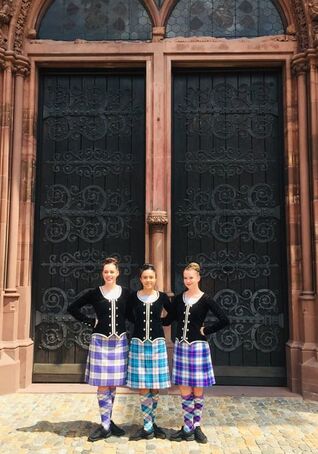 Sarah de Bruin, Devon Mokaraka and Shannon Vesey have recently returned from the Basel Tattoo, Switzerland, where they performed as part of the 49 strong International team of Highland Dancers, under the direction of Cheryl Roach, Stephanie Julliard and Rachael McLagan. The Basel Tattoo is recognised as being the second largest Tattoo in the world and this year included a cast of 1000 performers. The girls began their tattoo experience with 3 days of rehearsals, dancing from 9am till 6pm, perfecting the choreography, followed by full cast and dress rehearsals. They then went on to perform 11 shows over 9 days in the historical barracks in Basel, on the banks of the Rhine river. As part of the team, they were also involved in a parade through the city of Basel with the rest of the tattoo cast, and a Children’ s Day event. They also enjoyed day trips to the St Beatus Caves, Lake Lucerne, Stoos and Fronalpstock, getting to see some of the beautiful Swiss views. They performed 3 dances each night along with the finale. There was a Greek number accompanying the Hellenic Navy Band, a Scottish act with the Massed Pipes and Drums and the main dance item, called Celtic Fire, with music played live by the Red Hot Chilli Pipers. It was an incredibly rewarding experience and they formed lots of new friendships with other dancers from Australia, South Africa, Canada and Scotland. Videos of the performances can be found on the “Basel Tattoo International Dance Team” Facebook page. Written by Sarah de Bruin Some lovely photos sent in by Miss Tutu's School of Dance of their dancers with new competition jackets. These were made by the Highland Dancer in Scotland!
|
Have any news or recent events that you would like published on the ScotDanceNZ website? Let us know by email or through our Facebook page! Archives
April 2024
|
